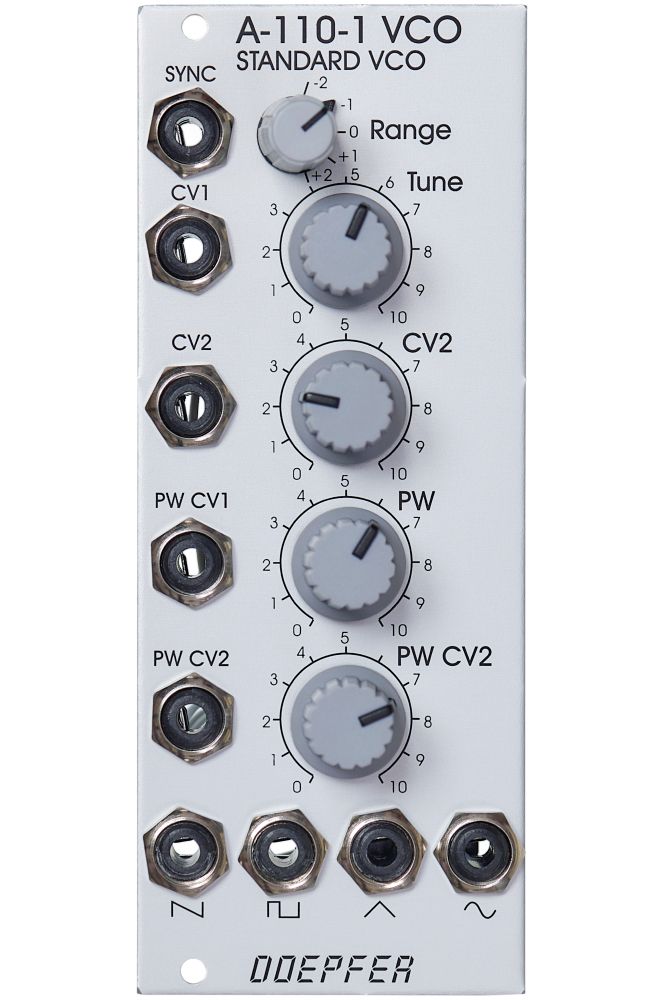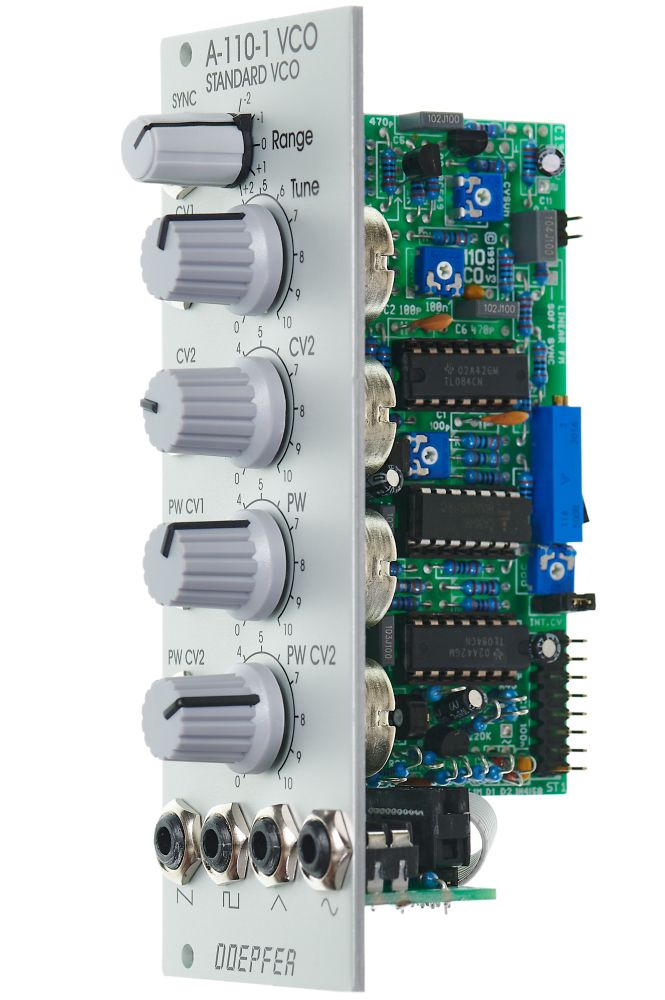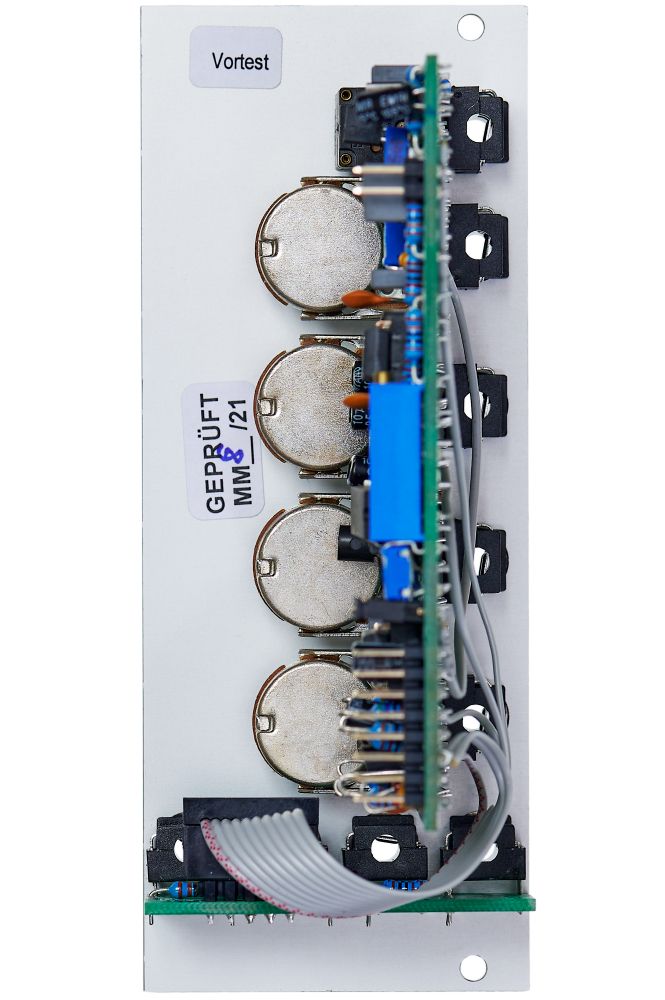A-110-1 Standard VCO
Module A-110 is a voltage-controlled oscillator. This VCO's frequency range is about eight octaves (ca. 15Hz ... 8kHz). It can produce four waveforms simultaneously: square, sawtooth, triangle, and sine wave.
This VCO's frequency range is about eight octaves (ca. 15Hz ... 8kHz). It can produce four waveforms simultaneously: square, sawtooth, triangle, and sine wave.
The frequency or pitch of the VCO is determined by the position of the octave (Range) switch and tuning (Tune) knob, and by the voltage present at the CV inputs. Frequency modulation (FM) of the VCO is therefore a possibility. Footage (the octave of the fundamental) is set by the Range control in five steps, and Fine tuning controlled by the Tune knob by about +/-1 one semitone (can be modified for a wider range). You can control the pulse width of the square wave either by hand, or by voltage control - Pulse Width Modulation or PWM.
Technical remarks:
Socket CV1 is normalled to the internal control voltage coming from the bus (interruptible by removing the jumper labelled "INT.CV", located next to the bus connector). Plugging a patch cable into the socket CV1 does interrupt the internal bus CV connection ! Other VCO modules may behave different in this regard (e.g. adding the internal bus CV to the CV applied to the socket at the front panel).
The core of the A-110-1 is a sawtooth oscillator (in contrast to the A-111-1, which is based on a triangle oscillator). The other waveforms are derived from the sawtooth by internal waveform converters. As the sawtooth reset (i.e. the back-to-zero slope) is not infinite fast but takes a little bit of time the derived waveforms triangle and sine are not perfect ! At the top of the waveform they have a small glitch or notch that is caused by the sawtooth reset and cannot be eliminated by the waveform converters. The sine is derived from the triangle by a simple diode-based converter and the sine shape is not perfect (only a rounded triangle). To obtain a nearly perfect sine signal the triangle-to-sine converter module A-184-2 is recommended. It includes also a voltage controlled crossfader to fade between two waveforms.
If a perfect triangle is required the A-111-2 or A-111-3 is recommended. For a perfect sine wave the thru zero quadrature VCO A-110-4 or the quadrature LFO/VCO A-143-9 is recommended.
The sawtooth output of the A-110-1 has a falling (or negative) slope as shown on the front panel.
The rotary switch used for "Range" has 10 positions. But only the positions marked at the front panel (-2 ... +2) should be used. Unfortunately the rotary switch cannot be limited mechanically to 5 positions only.
A simpler VCO (without sine, without rotary switch, but with linear FM input) is the module A-110-2.
A very small VCO is the module A-111-3 is the right choice.
A VCO with extended functions is the high end VCO A-111-2.
More special VCOs are e.g. the Trapezoid Quadrature VCO A-110-6 or the Quadrature Sine VCO A-110-4.
Remark: Module A-110 has been renamed to A-110-1 to distinguish it better from other modules of the A-110 series (e.g. A-110-2, A-110-4, A-110-6)


